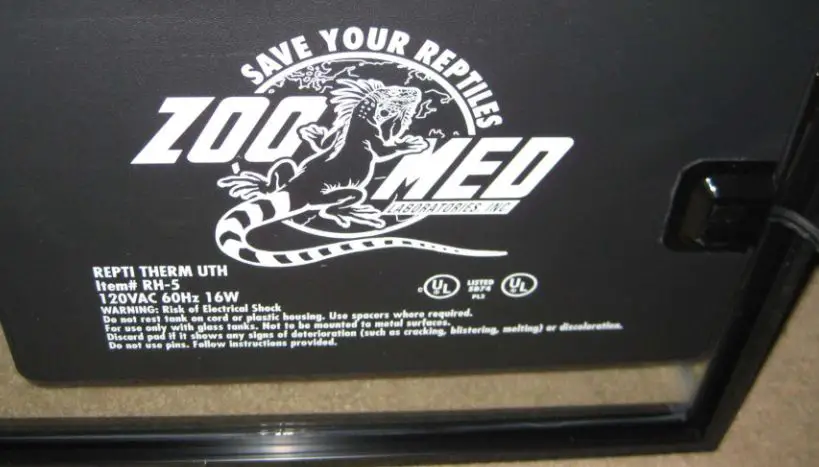In this post, we will explore the question, “Do leopard geckos need a heating pad?” We’ll talk about what a heating pad is and why it might be needed.
We’ll also discuss the various types of heating pads available for purchase and how to use them. So if you’re wondering whether or not your pet needs a heating pad, keep reading!
Do we hope you enjoy this blog post on do leopard geckos need a heating pad?
Related Posts:
- Top 7 Best Leopard Gecko Starter Kits for Easy Setup
- What Tank Size Does a Leopard Gecko Need?
- How Often Should You Mist a Leopard Gecko Tank?
- How Deep Should Leopard Gecko Substrate Be?
- Why Is My Leopard Gecko Hiding and Not Eating?
Do Leopard Geckos Need a Heating Pad?
Do leopard geckos need a heating pad?
Yes, leopard geckos need warm ground in their habitats since they spend the majority of their time there. A heating pad under a portion of the tank is one way to provide this warmth.
Lizards are ectothermic animals, which means that they do not produce their own body heat and must rely on the sun or a heat source to warm up from lazing in the sun to digest food.
In the case of leopard geckos, this means that they need a heat source to warm up so they can hunt, digest food, and reproduce.
How Should I Pick Out My Heating Pad?
Heating pads are often used under aquariums or terrariums, so their shape is made to fit glass tanks. They may be tapered on one side like with Lava Rock heaters or just completely flat on all sides.
The important thing is to make sure that your gecko’s tank will fit appropriately into the heater you choose before buying it. If you’re not sure, go smaller rather than bigger.
The best way of checking your heating pad will fit underneath your tank is to measure the space your gecko will have in his tank and then take a similar measurement of the heating pad.
If you’re using a 20-gallon tank, only use a 16-inch by 16-inch heating pad. Too big a heater can cause burns or even start a fire!
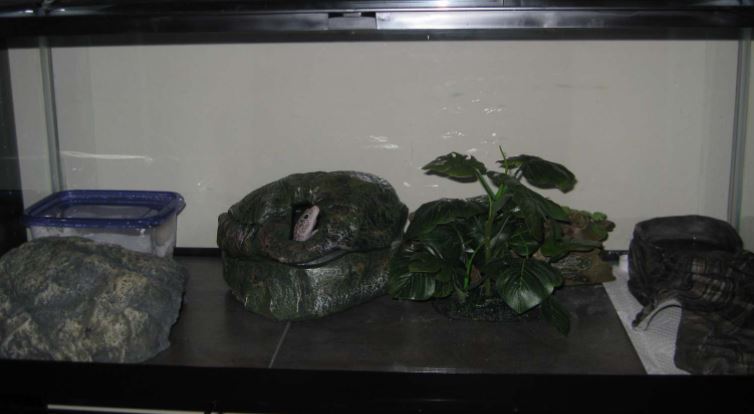
How Do I Set Up My Heating Pad?
Leopard geckos need to be able to hide from their heat source, so you should make sure there are at least two hides in your leopard gecko’s enclosure: one in the warm end and one in the cool end.
You also want to make sure that the hot side stays around 90 degrees Fahrenheit while the cooler side stays about 80 degrees Fahrenheit.
This way, your leopard gecko will be able to choose where he or she wants to spend time and can regulate his or her body temperature accordingly.
If you’re using a heat mat, then you’ll want the entire tank floor to be on the mat. Tape the cord of the heating pad out of harm’s way along one side of your tank so your gecko won’t chew on it.
If you’re not sure how much of an area your gecko needs to be warmed up, start small! You can always use more than one heater if needed.
What Problems Might I Encounter With My Heating Pad?
Leopard geckos are pretty hardy creatures, but there are a few limitations with a heating pad, such as:
- It will only heat up a portion of the enclosure.
- If it gets too warm, your leopard gecko may get burned.
- It’s not a good long-term heat source, make sure you know how to use a thermostat or rheostat (more on that below).
If you’re looking for something to give your gecko a quick warmth boost in his tank without worrying about all of the problems that could come with keeping the entire tank heated over an extended period of time, then a heating pad can be great!
Just make sure that your leopard gecko isn’t getting burned and has enough places to hide and regulate his body temperature.
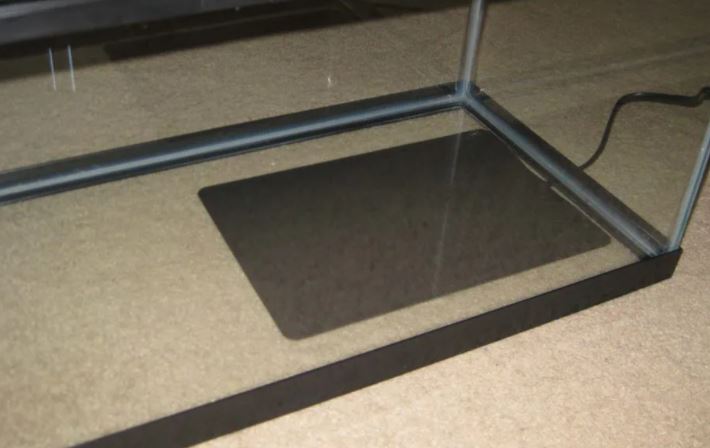
Do Leopard Geckos Need Heat at Night?
Yes, leopard geckos need different lighting in the daytime and nighttime. They need heat during the day, but only light at night.
If you have a day gecko and a night gecko, make sure your nighttime gecko gets about 14 hours of light with 10 or more of those hours being darkness.
Make sure to make the transition from day to night gradual by leaving the lights on for fewer and fewer hours each week until you reach 14 hours of light with 10 hours of darkness.
If your leopard geckos are in the breeding season, they’ll need about 12-14 hours of daylight all year round.
How Do I Use a Thermostat or Rheostat for Leopard Geckos?
A heat mat is just that: It heats up. If you’re using an under-tank heater, then it’s heating up one side of the tank.
You’ll need to make sure your leopard gecko can regulate his or her body temperature on both sides of the tank with the hot and cold hides!
But if you’re using a crinkle pad (which warms up), you don’t need to worry about regulating the hot and cool sides of the enclosure.
And even though heating pads are most often used underneath glass tanks, nocturnal geckos like to bask during the day in open habitats.
So this may be another option for you depending on the type of heat mat you get and the size of your tank.
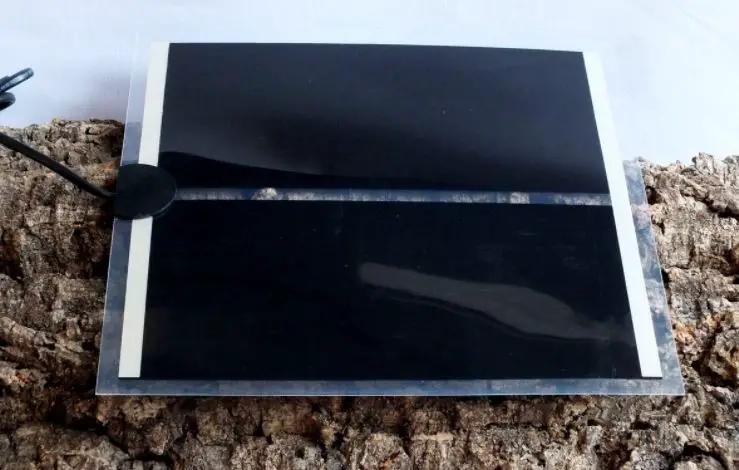
How Many Watts Should the Heating Pad Be for Leopard Geckos?
The wattage of a heating pad determines how hot it will get.
The size of the heater and what you set it at determines how much electricity it will use and how hot the pad will be.
What Is the Best Way to Heat My Leopard Gecko’s House?
Leopard geckos need two different temperatures: one side of their tank can be 90 degrees Fahrenheit while the other side stays around 80 degrees Fahrenheit.
This way, they can choose where they want to spend time and regulate their body temperature accordingly. You’ll want a warm hide on the 90-degree side as well as a cool hide on the 80-degree side.
On top of that, you need to have at least one hot spot in the enclosure that’s 105 degrees Fahrenheit. If you’re using a heat mat, then you’ll want the entire tank floor to be on the mat.
Tape the cord of the heating pad out of harm’s way along one side of your tank so your gecko won’t chew on it.
If you’re not sure how much of an area your gecko needs to be warmed up, start small! You can always use more than one heater if needed.
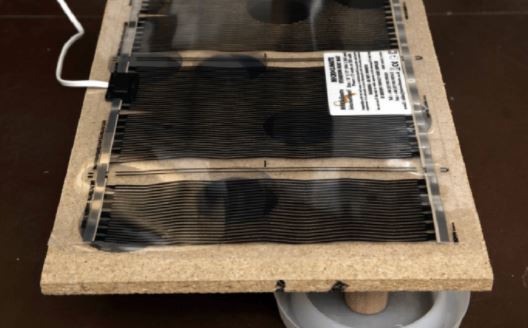
Can I Use Two Different Types of Heating Pads Together?
You shouldn’t need to, but you could definitely use both a heat mat and an under-tank heater together if you wanted to put them at opposite ends of your tank (if you’re using a glass tank).
Your leopard gecko would benefit from the added warmth and you wouldn’t need to worry about regulating the temperature on each side of the tank.
If you do use two different kinds of heaters, make sure that your gecko has access to cool and warm hides as well as a hot spot.
You can also use a heat mat and an under-tank heater together if you have a glass tank, but your gecko may not need both of them on with the temperature at one end of the tank reaching 90 degrees.
If that’s the case, then it’s best to only use one heating device in your leopard gecko terrarium.
Conclusion
Do leopard geckos need a heating pad?
It is generally recommended that leopard geckos have a heating pad to simulate the sun.
There are many types of pads available for purchase, and it’s important to make sure your pet has one with proper wattage so they can stay warm!
Key points for leopard gecko heating pads:
A heating pad or heat mat is a vital component for maintaining the proper temperature in a leopard gecko enclosure. Here’s a concise breakdown in bullet points for quick reference:
1. Heat Pad Functionality:
- Localized Heat Source: Heating pads are placed beneath one side of the tank to create a warm area, allowing geckos to regulate their body temperature as needed.
- Nocturnal Heat Source: Leopard geckos are nocturnal, relying on external warmth to digest food and maintain overall health. Heat pads simulate the warmth they’d seek in their natural habitat.
2. Optimal Temperature Requirements:
- Temperature Gradient: The warm side should reach around 88-90°F (31-32°C) during the day and drop to 70-75°F (21-24°C) on the cool side at night.
- Thermostat Regulation: Using a thermostat with the heating pad helps maintain a consistent temperature, preventing overheating and ensuring safety.
3. Placement and Installation:
- Under Tank Placement: Place the heating pad beneath one-third to one-half of the tank’s floor, covering part of the warm area and creating a gradient.
- Heating Pad Size: Choose a pad that covers an appropriate portion of the tank, leaving ample space for the gecko to move between warm and cool zones.
4. Heat Pad Safety:
- Safety Measures: Ensure the heating pad is made specifically for reptiles, with features like chew-resistant cords and appropriate insulation to prevent overheating.
- Avoid Direct Contact: Always use the pad under the tank, never inside, to prevent direct contact with the gecko and potential burns.
5. Monitoring and Maintenance:
- Regular Checks: Monitor the temperature with a thermometer to ensure the pad maintains the desired temperature range consistently.
- Cleaning: Regularly clean the pad and its surroundings to prevent dust accumulation, which can affect its efficiency.
6. Supplementary Heat Sources:
- Ceramic Heat Emitters (CHE) or Heat Lamps: While heating pads are excellent for providing belly heat, some gecko setups might require additional overhead heat sources to create ambient warmth in the enclosure.
7. Individual Needs:
- Variation in Tank Setup: Assess your gecko’s enclosure and behavior; some may prefer the warmth of a heating pad more than others, depending on individual preferences.
- Consultation: If unsure about setup or temperature regulation, consult with a reptile vet or experienced keeper to ensure optimal conditions for your leopard gecko.
In summary, a properly installed and regulated heating pad is an essential component for maintaining the ideal temperature gradient in a leopard gecko enclosure, supporting their health, digestion, and overall well-being. Regular monitoring and appropriate placement are crucial for providing the best conditions for these reptiles.
Further Reading:
- 9 Best Heat Mats for Leopard Gecko
- 7 Best Bioactive Substrate for Leopard Gecko
- Are Leopard Geckos Sensitive to Light?
- How Often Should I Clean My Leopard Gecko Tank?
- Can You Walk a Leopard Gecko on a Leash?

